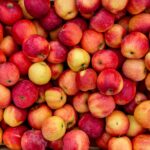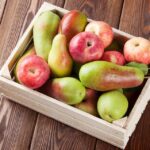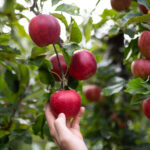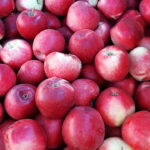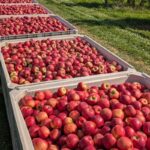Opinion: a call for agreement between Russia and Poland

By RK Marketing/Fruitnews.ru general director Irina Koziy
 The ban on a wide range of Polish fruit and vegetables as of August 1, imposed by the Russian Federal Service for Veterinary and Phytosanitary Surveillance (Rosselkhoznadzor), will definitely have negative consecutives both for the Russian consumers and the fresh produce industry, as well as for agricultural suppliers from Poland.
The ban on a wide range of Polish fruit and vegetables as of August 1, imposed by the Russian Federal Service for Veterinary and Phytosanitary Surveillance (Rosselkhoznadzor), will definitely have negative consecutives both for the Russian consumers and the fresh produce industry, as well as for agricultural suppliers from Poland.
In the current season it is mostly affecting the categories of stonefruit (HS code 0809) and other vegetables (HS code 0709).
In the case of stonefruit, products from Poland only represent about 3% of the total Russian annual import level, according to federal customs service data for 2013, and the season for these products from Poland is very close to its end now. Thus, only 20% of all stonefruit shipped from Poland to Russia in 2013 arrived in our country after July 31. Other vegetables (HS code 0709) are shipped to Russia almost evenly throughout the year, with approximately 15% of the Polish share in total imports.
This situation will become much more painful if Russia and Poland will not be able to come to the agreement that lifts the ban by October, when large shipments of Polish apples and significant shipments of Polish cabbage usually start coming coming in. In 2013, the share of apples, pears and quinces (HS code 0808) imported from Poland was equal to 43% of total imports of this code, and an additional 10.5% share was brought from Moldova which is currently under the ban too.
It is also important to mention that about 80% of all apples and pears consumed in Russia are imported. Suppliers from Poland and Moldova used to ship apples of the lower cost segment and to cover the demand of the very large group of Russian consumers with low income.
It is almost impossible to quickly replace such large volume with apples of some other origin. Thus, local market players are likely to experience serious difficulties and Russian consumers will face increased prices and a possible deficit of apples on the retail shelves.
The situation with cabbage (HS code 0704) is similar – about 35% of total imports to Russia are coming from Poland with the major season from October until May. However, only about 10.5% of the cabbage consumed in Russia is imported, so the negative impact on the cabbage market will be not that large as for the apple market.
Other vegetables in the HS code 0709 include: asparagus, artichokes, eggplants, celery, capsicum, spinach, squash, olives and different mushrooms. However, mushrooms are excluded from the list of banned products in the text of Rosselkhoznadzor announcement.
Concluding, I hope that the two countries will be able to come to an agreement and the ban will be lifted earlier, or it will create major suffering for Russian consumers and problems for Russian traders and retailers, as well as for Polish farmers and export companies.
We at FruitNews used to be proud that consumption of fruit and vegetables in Russia was quickly and constantly growing in the recent 15 years, with more and more Russian people able to afford regular purchases of fruit and vegetables for their families. Hopefully, the decision will be found early enough in order to prevent major impact on consumers' well-being and the current trend of constantly increasing consumption of fresh produce will stay in place in the future.
Related story: Russia whacks temporary ban on a range of Polish produce items
















